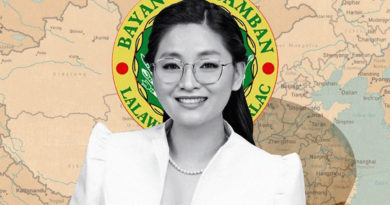Jakarta Globe 17 August Insight : MILLENNIALS PUT MUSLIM LIFESTYLE ON DISPLAY
 THIS MONTH’S INSIGHT
THIS MONTH’S INSIGHT
| 17 AUGUST | LIFESTYLE | Dhania Sarahtika & Diella Yasmine
.
.Jakarta. Over the past decade, blogs and social media have become fun tools for Muslim millennials in Indonesia to share their take on the latest trends in modest wear, but after recent political events, many have started to share more than just their looks online.
In an ongoing study that began in 2009, researchers at Youth Laboratory Indonesia found that Indonesians between the ages of 13 and 30 consider it trendy to show obedience to their religion. Founder Muhammad Faisal said the study was conducted among 1,000 respondents in Jakarta; Bogor, Depok, Bekasi and Bandung (in West Java); Tangerang (Banten); Medan (North Sumatra); Yogyakarta; Surabaya and Malang (East Java); and Makassar (South Sulawesi).
Faisal said similar accounts of teenagers becoming more religious also came from other parts of Asia and Europe. Amid rising global sentiment against religion, and Islam in particular, young people everywhere are starting to go against the current.
“Young people are always looking for unpopular things and trying to make it ‘cool.’ For example, Gen-X was all about booze, and that’s when drinking became something ‘cool,’” said Faisal, who added that Youth Laboratory Indonesia would continue to monitor the trend over the next 20 years.
Faisal believes this is an experimental step for millennials to reach maturity.
“Right now, it is an era of open information. Any kind of misfit can be easily found on the internet, so young people tend to retreat to the old ways and become more conservative. And young people will always try to find a way to popularize any religious aspects, for example, hijab fashion,” he said.
Modest wear designer Dian Pelangi, who had a breakthrough in making innovative slip-on hijabs, said social media plays a big role in the development of modest fashion in Indonesia.
“Social media is very influential because information spreads very fast there. We can easily share trendy hijab styles and tutorials on how to wear and where to buy them. It shows people that it is easy to wear a hijab,” she said.
When Dian launched her first ready-to-wear collection at the age of 18 in 2009, she placed herself at the forefront of Indonesian modest fashion. The average price for items in her ready-to-wear collection is between Rp 1 million and Rp 2 million ($75-$150). In 2010, Dian and her influencer friends established the Hijabers Community as a group-sharing platform for hijab-wearing women. The community now has more than 97,000 followers on Instagram, where they participate in various activities, including discussions on Muslim fashion trends, monthly Koran talks and fundraising for social causes.
Soon after Dian’s first collection, the business of modest fashion blossomed in Indonesia. She said her business has been profitable since the beginning, but it increased after she began doing fashion shows on international runways. She said modest fashion also appeals to customers who do not wear the hijab.
“I would say about 10 percent of my customers are Muslims who do not wear the hijab,” she said.
When Dian began selling her slip-on hijabs and ready-to-wear collection, the modest-wear trend revolved around hip and trendy hijabs, which are typically short and practical. However, 19-year-old student Pinky Bilika, who likes to keep an eye on the latest trend in modest wear through influencers she follows on Instagram and Ask FM, says longer, shariah-style hijabs have recently become more popular.
Pinky, who has been wearing the hijab since she the age of 15, said she is seeing more women covering their faces with niqabs on social media.
“We usually start [wearing the hijab] by following the trend, but then we must adjust to the real purpose of wearing a hijab. But I’m more in the middle, I like cute hijabs, but I don’t always buy into the trends,” she said. “Although I hope one day I will be able to opt for the shariah-style hijab.”
The rise of modest fashion in Indonesia is also followed by plenty of supplies for Islamic products, from halal makeup, special travel agents for umrah and hajj, to shariah-compliant banking services. Earlier this year, Financial Services Authority (OJK) chief Muliaman D. Hadad said Islamic banking services will increase by approximately 12 percent in 2017. Islamic banking grew by up to 20 percent in previous years.
According to Achmad Munjid, a researcher at the Center for Religious and Cross-Cultural Studies at Gadjah Mada University in Yogyakarta, the Muslim lifestyle in Indonesia is the result of adopting Islam as a political identity, which dates back to the 1965 tragedy.
“In 1965, to be religious was a political act, because if you failed to prove that you are a Muslim, people would think you were a communist and consider you an enemy. That was the reason we put religion as a category on our KTP [national identity cards],” he said.
Achmad explained that from 1965 until the early 1990s, people turned to religion to save themselves and their families. They began to express their spirituality or religiosity by dressing up or talking in certain ways. In the 1990s, Islam became dominant in politics and the economy. He said right now, the wave of Islamization is making people feel the need to keep up.
“More people will feel the need to go along with the current trend. People want to prove that they are a real Muslims and they start by changing the way they dress and talk. Verses from the Koran stay the same but interpretations are always influenced by the political, economic and social aspects in society,” he added.
Achmad cited the hijab as an example.
“The Koran does talk about the hijab, but the verse refers to the Prophet’s wife. Hijab was not widely used in Indonesia until the Iranian revolution in 1979, when an Islamic party took over the country from a secular government. Islam as a political identity gained momentum and the revolution inspired other Islamic movements in the world. That’s why many Indonesian women began wearing the hijab in the 80s and early 90s,” he said.
Apart from political advantages, the wave of Islamization also created business opportunities.
“You can find Islamic banks, Islamic radio stations, newspapers, movies. This [country] is an established market; people will buy anything labeled ‘Islam.’ As competition increases, people will start claiming to be more or less Islamic,” he said.
Dian Pawestri, a 29-year-old entrepreneur, said social media sites such as Facebook and Instagram used to be fun and enlightening, but it has changed after this year’s hotly contested Jakarta gubernatorial election.
Dian, who runs a shop selling modest fashion, feels that the Jakarta election changed the social dynamics in the country. Many of her friends began to change the way they dress so they could incorporate Islamic attire, such as hijabs and loose ankle pants. They also suddenly became very conscious of non-halal products, and started quoting certain Koranic verses on their social media feeds.
“After the Jakarta gubernatorial election, I think there is a trend to be more Muslim than you used to be. I noticed many people becoming very reactive towards sensitive issues. They can be very judgmental to other people and they made me uncomfortable, so I had to remove many followers on social media,” she said.
Dian said she prefers to be a silent reader because she does not want to sacrifice the friendships she has built up over many years.
“Because of the election, many people are in a very defensive mode about Islam, so I prefer to stay silent. I don’t want to debate anyone because people are so easily provoked these days,” she said.
When it comes to the internet and technology, Faisal said it is important to remember that Indonesian people have their own history regarding public access to information, so the way they use these tools is different than people in other countries.
“The fluctuation of religious expression happens because there is a lack of maturity on a community level, especially in terms of using social media. We should not be too quick to draw conclusions and believe that whatever happens on social media reflects our society,” he said.
Achmad of Gadjah Mada University echoed Faisal’s careful explanation.
“This is a common propensity that happens in all religions. When people feel worried or threatened, they always want to return to the original ways [of doing things]. We can never fully claim that [whenever people exhibit their Muslim identities through specific attire and expression] it is all about political identity. To each their own. We can only see it as a social phenomenon by reading the history of politics,” he said.
While the dust of the Jakarta election is beginning to settle, many political forecasts indicate an even tougher contest during the upcoming 2019 presidential election.
“What we know for sure, is that this [fluctuation] will continue as long as religion is used as a commodity in political campaigns,” Faisal said.
Writing and additional reporting by Lisa Siregar


For comments, Email to : [email protected] – Contributor









